Retrospective of technology startups. As it was in the 90s and a little earlier.
Previous article in the cycle: Retrospective technology startups. Z3 - the first relay computer

In this article, I continue the retrospective of startups. Fast forward from Germany to World War II to young Russia in the early 1990s of the last century. This time there will be many examples of how this happened in Zelenograd and an attempt to answer the question: “How and why did electronics business grow from scratch by leaps and bounds at that time?”
')
But first, let's take a quick look at the sunset era of the USSR star.
In late Soviet times, the production of electronics outside the public sector was very bad. In today's sense, it is simply absent. Yes, already then there were cooperatives, artels and citizens working under a patent, but in completely different areas.
In the late eighties, even the magazine “Radio” was not easy to get, let alone radio details. Rare, especially in the provinces, radio stores were filled with customers, but as part of the sets there were, at best, sets of resistances and already then hopelessly outdated transistors of the MP39 type, and at very inflated prices.

The assortment of “do-it-yourself” stores was somewhat more interesting, but they were not available in every settlement. In them, it was possible to buy equipment that was decommissioned from the rental salons in a semi-disassembled condition, and if you were lucky, it would be a seriously discounted new product that did not pass quality control at work or had external defects. Of course, the main supplier of the most interesting and desired details was the money-clothing markets, commonly referred to as “flea market” in common people. There you could buy a lot of things - KT315 transistors, logic chips and even thyristors for color music. Particularly lucky had access to specialized landfills at the plants. Of the measuring instruments, testers were easily accessible.
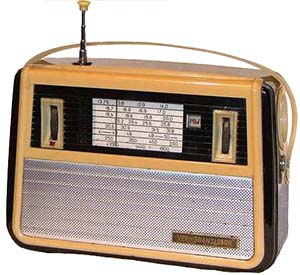
Private "production" was a craft under the roof of amateur radio, based on "communicated" from the production of parts and grouped around the profile plants. Enthusiasts modified radio receivers to receive broadcasting on the unused shortwave bands in the USSR, where foreign voices were jammed with less intensity, made the simplest color-sounding set-top boxes custom-made, modified power amplifiers and acoustics, assembled radio control equipment for models ... But all this is a maximum of several copies.
In the second half of the 80s in the USSR, with the help of children of diplomats, foreign students, athletes and other mysterious ways, individual instances of household computers, focused primarily on games, began to penetrate. However, it was much more difficult to meet the original ZX Spectrum in the USSR than, for example, such foreign PCs like the Atari, the Commodore 64 or MSX.
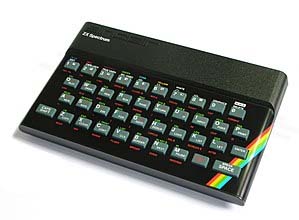 Spectrum in almost all important parameters was clearly inferior to both Atari and MSX, and even the first Soviet home computer BK-0010/0011, whose architecture was built on the basis of an advanced 16-bit processor. However, when the ZX Spectrum fell into the hands of electronics engineers, they quickly were able to assess its strengths.
Spectrum in almost all important parameters was clearly inferior to both Atari and MSX, and even the first Soviet home computer BK-0010/0011, whose architecture was built on the basis of an advanced 16-bit processor. However, when the ZX Spectrum fell into the hands of electronics engineers, they quickly were able to assess its strengths.
ZX Spectrum appeared thanks to the famous inventor - businessman Clive Sinclair in 1982 in the UK. He initially thought of as the cheapest home PC with color graphics support. To reduce the cost, it used the simplest keyboard of all 40 buttons, each of which carried up to six functions, including several BASIC operators. But the most unique in the Spectrum - is its graphical mode. Firstly, it is only one, unlike most other PCs of those years, which usually had several video modes, and secondly, the video system was able to display 16 colors with a resolution of 256 × 192 pixels high enough for games and at the same time required less than 7 KB of video memory . Due to the wide border, the picture did not occupy too much of the screen, but it had good quality.
At that time, there were many specialists in the USSR specializing in the cloning of foreign products of electronic equipment, which made it possible in less than a year to create a simple and cheap clone ZX Spectrum on the basis of widespread domestic logic.
Comparative simplicity of the architecture is only one video mode, the absence of hardware sprites, character generator, scrolling, sound synthesizer, etc. allowed to very accurately simulate "Spectrum" on the usual Soviet element base. Trivia, such as the incorrect operation of the video controller and the crookedly realized connection of the joystick, were outweighed by the low cost of assembly and the availability of components.
But the main advantage, compared with domestic domestic PCs produced at that time, was that it was designed for a couple of orders of magnitude more games and other applications.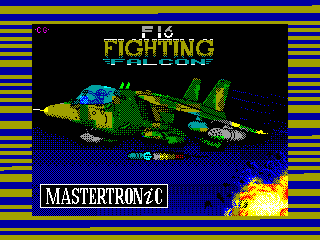 The number of Spectrum-compatible Soviet models grew like a snowball, and in the early 1990s, literally dozens of factories produced them, strongly pushing back the original domestic developments to the background.
The number of Spectrum-compatible Soviet models grew like a snowball, and in the early 1990s, literally dozens of factories produced them, strongly pushing back the original domestic developments to the background.
Circuitry Spectrum-compatible PC, developed by amateur enthusiasts in the second half of the 80s. The “Spectrum” scheme was unknown in details - in the original PC, one specialized ULA chip was used to reduce the cost of production instead of dozens of individual logic chips, hiding the logic of operation. Therefore, the authors of Spectrum-compatible computers were looking for their own solutions that simulate the operation of the prototype in accordance with the known external specifications - memory allocation, screen organization and the designation of control ports. Usually, Soviet counterparts contained about 45–80 microchips, which made them quite simple and cheap to manufacture. At the first stage, everything except the processor was produced by the domestic industry.

Since 1991, during the Spectrum boom, in Zelenogradand not only began the production of processors that are fully compatible with the Z80 T34VM1 , and the specialized microcircuits BMK T34VG1, KA1515HM1 , the ROM T34PE1, and others. chip and reduce the number of chips in the minimum version to 16.
At the end of the eight, imported circuits began to penetrate into significant quantities due to the cordon. Very quickly they got to the MIET hostel.
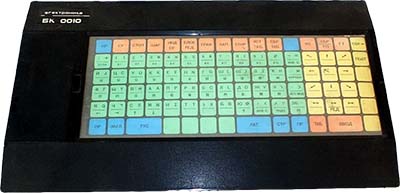 By the time senior students were quite ready to master the Spectrum. I with three of my classmates threw off 150 rubles each and became the first owners of household computers BK-0010 that have just appeared in our hostel. It was possible to write simple programs on BASIC on it, but there were almost no gaming applications. This prompted to start developing their own games. I will never forget the delights of graphics control in PDP-11 machine codes, since even the assembler was absent, and the basic in firmware ROM was not able to work with graphics. Taking into account the preservation of programs on a household tape recorder and the instability of the power grid, this was quite a non-trivial task.
By the time senior students were quite ready to master the Spectrum. I with three of my classmates threw off 150 rubles each and became the first owners of household computers BK-0010 that have just appeared in our hostel. It was possible to write simple programs on BASIC on it, but there were almost no gaming applications. This prompted to start developing their own games. I will never forget the delights of graphics control in PDP-11 machine codes, since even the assembler was absent, and the basic in firmware ROM was not able to work with graphics. Taking into account the preservation of programs on a household tape recorder and the instability of the power grid, this was quite a non-trivial task.
So without finishing the first game to the end, I became fascinated with mountain tourism and for a while computers moved into the background into my life. A couple of other “concessionaires”, on the contrary, got carried away in earnest. And now, towards the end of 1988, not only the imported 8-bit Z-80 processor, but also the circuit of the legendary Sinclair ZX Spectrum , fell into my hands by means of unknown ways. By that time, the guys already had experience in assembling and adjusting the RC-86 computer on a blindfly, so it was not too difficult to repeat this feat with the Spectrum.
The appearance of a gaming computer in their room could not go unnoticed by numerous friends. The room instantly turned into a sort of “showroom”. A week later, they made an offer to buy from which they could not refuse. Moreover, a virtual line-up of potential customers was soon formed, ready to pay the money in advance.
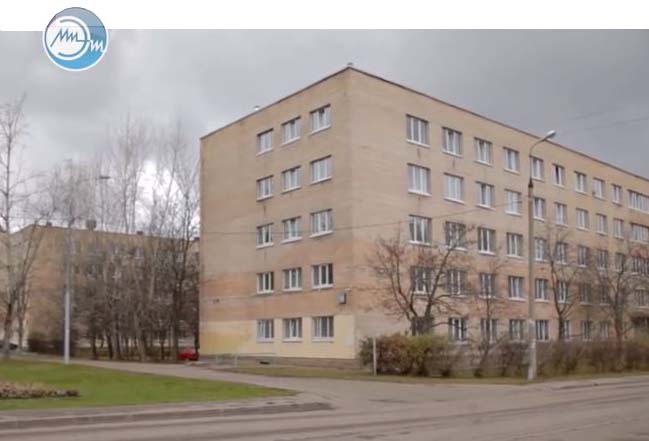
In the hostel, consisting of 6 residential buildings, connected together by a common corridor, the news spread very quickly, even without the Internet. Soon my friends had a third companion who had a commercial vein.
Friends enrolled in graduate school, study and research began to take a lot of time. To solder, adjust, debug ready boards, search for cases, cram content into them ... it was too long and not too interesting. In such conditions, it was much more suitable to assemble sets for self-assembly for them than to assemble ready-made computers. Especially in the student environment of Zelenograd, where many were friends with a soldering iron. What my friends and do.
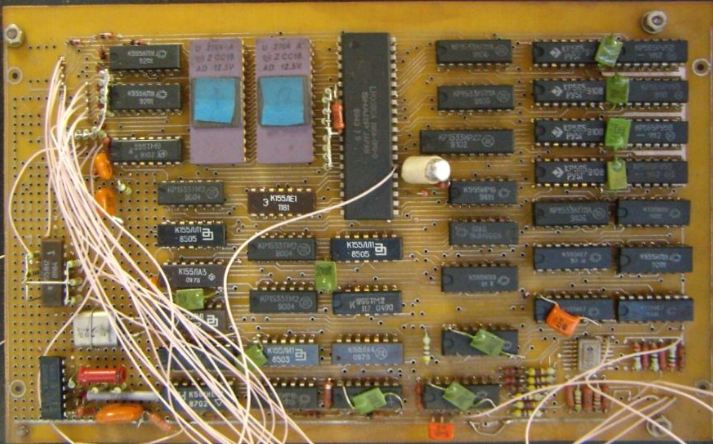
It cannot be said that the information in those days was very expensive - it was very difficult to access. There was neither the fact that the Internet - typewriters had to register with the KGB! The first scheme I had to shoot as a copy of tracing paper.
By that time I had already graduated from the institute and, unlike the children, I was not able to gain a foothold in the graduate school, taking mountain hikes too long . Considering my share in BK-0010, I bought the full set of Leningrad-1 motherboards from them almost at cost price — 120 rubles approximately two times lower than their standard price and went to Tver. For comparison, in order to estimate the profit rates of those years, in a thrift store the price for a ready-made ZX Spectrum reached 1,000 rubles.
 My friends' business ended as quickly and swiftly as it began. One of them did not share the girl with the merchant who joined them and there was a serious quarrel. For one and a half years of activity of their enterprise, the local market with a sales channel in the form of a word of mouth was almost saturated. 1991 was approaching and many were no longer up to gaming computers. The number of components produced by “barter schemes” was limited. In order to move to other scales, everything had to be changed - the organizational structure, the delivery channels for bundling and marketing. Perhaps they would go for it, but in the summer, in
My friends' business ended as quickly and swiftly as it began. One of them did not share the girl with the merchant who joined them and there was a serious quarrel. For one and a half years of activity of their enterprise, the local market with a sales channel in the form of a word of mouth was almost saturated. 1991 was approaching and many were no longer up to gaming computers. The number of components produced by “barter schemes” was limited. In order to move to other scales, everything had to be changed - the organizational structure, the delivery channels for bundling and marketing. Perhaps they would go for it, but in the summer, in order to distract from the love story, one of our heroes decided to visit the USA, and the second made him company. The money earned on such a voyage is more than enough.
Back from their tour they have not returned.
Practically all firms known to me today, still engaged in the production of electronic devices in Zelenograd, began their history in those days.
The computer boom in the private sector in Zelenograd did not happen, but only because a much more interesting product appeared. Telephone with automatic caller ID - Caller ID.
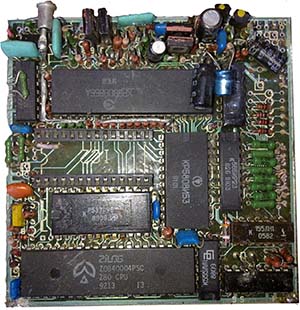 The board for caller ID contained much less chips, was cheaper to purchase, easier to install and configure. It is easily installed in the case of serially produced push-button phones, as opposed to computer. The mass user understood much better what benefit he could get from caller ID than from a gaming computer. The opportunity to see who is calling you before picking up the phone, find out in the evening who called in your absence, shut off unwanted calls using the “black list”, the auto redial function - all this turned out to be very popular and understandable to the average man.
The board for caller ID contained much less chips, was cheaper to purchase, easier to install and configure. It is easily installed in the case of serially produced push-button phones, as opposed to computer. The mass user understood much better what benefit he could get from caller ID than from a gaming computer. The opportunity to see who is calling you before picking up the phone, find out in the evening who called in your absence, shut off unwanted calls using the “black list”, the auto redial function - all this turned out to be very popular and understandable to the average man.
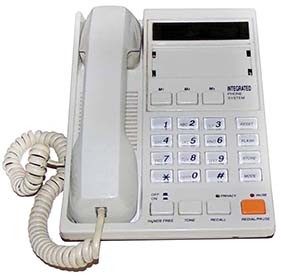 In the city there is a mass of small producers. Both software and hardware components of the Caller ID are quickly improving. The installation is outsourced to students. Then almost half of the MIET dormitory was engaged in the literal sense of knee-soldering boards. Initially, the main sales go through the radio market in Mitino. However, companies that build regional distribution networks appear rather quickly and begin to concentrate production within themselves. Sometimes the structures of the consolidated companies resembled holdings, which provided small producers with a sales network, assistance in bookkeeping and even loans for the purchase of a complete set outside the high sales season. One of the most famous companies in Zelenograd was Remikon and Telesystems.
In the city there is a mass of small producers. Both software and hardware components of the Caller ID are quickly improving. The installation is outsourced to students. Then almost half of the MIET dormitory was engaged in the literal sense of knee-soldering boards. Initially, the main sales go through the radio market in Mitino. However, companies that build regional distribution networks appear rather quickly and begin to concentrate production within themselves. Sometimes the structures of the consolidated companies resembled holdings, which provided small producers with a sales network, assistance in bookkeeping and even loans for the purchase of a complete set outside the high sales season. One of the most famous companies in Zelenograd was Remikon and Telesystems.
At that time, printed circuit boards were manufactured at state-owned Zelenograd factories, only they had expensive and large equipment. There were no special problems with production, but the factory technologists were reluctant to prepare the boards for production, but the demand for this service grew rapidly. It was then that a couple of people buddies from Remicon, who shouldered this job. The resulting company was developing very dynamically and now her name is known to almost all electronics engineers in Russia - this is the company Resonit.
In the first half of the nineties, there are many small firms that find narrow niches with a high rate of return. A typical start-up of that time is a former amateur radio operator, who earned a small initial capital on mediation. The heyday of small intermediaries was in 1991-92, then the subjects of this market began to quickly grow and become criminalized. The techies squeezed out of it found their niches in which they opened up small businesses.
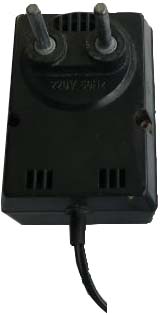 So one of my friends, a
So one of my friends, a radio amateur since school, is developing a simple and cheap switching power supply for AON. Transformer transformers widely used at that time were cumbersome and inconvenient, so the pulse set went well with the top devices, although they were somewhat more expensive. Surprisingly, in the development of the business he was helped by poor quality and, most importantly, a strong fluctuation from batch to batch of parameters of transistors and cores of coils. The bundle at that time was bought on the market and it was impossible to predict from which reject you came across another batch of ferrite rings and at which plant it was made. Therefore, often had to pick up face values of passive parts from batch to batch. For this reason, stupid copying of its products by competitors, who did not have specialists well versed in the intricacies of the processes occurring within the source, led to mountains of marriage. As a result, for several years he managed to hold almost a monopoly position in this narrow area.
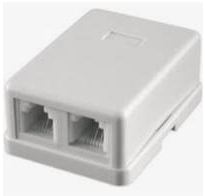 Later, they found another niche where deep knowledge of analog circuitry was useful — devices for wired telephony. In the assortment of his small enterprise there were splitters and combiners of telephone lines, unauthorized connection blockers, signal amplifiers, matching devices for connecting imported phones to the ordinary Russian line and to Kvant-type exchanges, etc. They were significantly cheaper than telephones with caller ID, but generated a good rate of return. In the best of times, several girls and one highly skilled serviceman worked on the assembly. Over time, to expand sales beyond the radio market, the company became part of the Remikon holding and existed for a long time, finally bending in the second half of the two thousandth, when the use of cellular communication reduced the interest in wired telephony to almost zero. At the beginning of the two thousandth, I tried to convince the owner of the need for a smooth transition to new areas of activity, but without success. He did not want to spend money on experiments.
Later, they found another niche where deep knowledge of analog circuitry was useful — devices for wired telephony. In the assortment of his small enterprise there were splitters and combiners of telephone lines, unauthorized connection blockers, signal amplifiers, matching devices for connecting imported phones to the ordinary Russian line and to Kvant-type exchanges, etc. They were significantly cheaper than telephones with caller ID, but generated a good rate of return. In the best of times, several girls and one highly skilled serviceman worked on the assembly. Over time, to expand sales beyond the radio market, the company became part of the Remikon holding and existed for a long time, finally bending in the second half of the two thousandth, when the use of cellular communication reduced the interest in wired telephony to almost zero. At the beginning of the two thousandth, I tried to convince the owner of the need for a smooth transition to new areas of activity, but without success. He did not want to spend money on experiments.
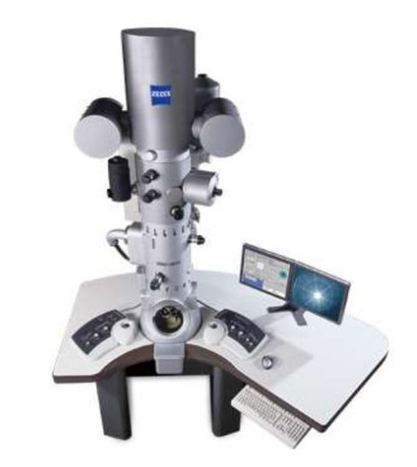 Over time, most businesses that started in the 90s went bankrupt and only a few managed to grow into large companies. I even know one that is directly involved in the development of semiconductor technologies and has become one of the world leaders in the production of probes for scanning tunneling electron microscopes.
Over time, most businesses that started in the 90s went bankrupt and only a few managed to grow into large companies. I even know one that is directly involved in the development of semiconductor technologies and has become one of the world leaders in the production of probes for scanning tunneling electron microscopes.
Of the companies that have not managed to grow up, a certain number of them have also survived to this day, among which, for example, manufacturers of specific medical equipment, radiation monitoring devices, etc.
The ideal time to start a business from scratch was the middle and second half of the nineties, the very ones to which the label “dashing” is stubbornly attached. Well, if we assume that this is in the sense that it was then possible to quickly start from scratch , I am ready to agree. At that time there were a lot of factors favorable for the growth of small businesses:
: . Z3 —

In this article, I continue the retrospective of startups. Fast forward from Germany to World War II to young Russia in the early 1990s of the last century. This time there will be many examples of how this happened in Zelenograd and an attempt to answer the question: “How and why did electronics business grow from scratch by leaps and bounds at that time?”
')
But first, let's take a quick look at the sunset era of the USSR star.
What is all this for?
In the first startup, I took part the following year after graduation, although at that time we did not yet know this buzzword. Since then, I have in one way or another related to a considerable number of them. Most did not last long, but there were also successful ones. Attempts to analyze have shown that a successful startup strategy changes depending on the socio-political situation in which it is born. To choose the best strategy for today, it will not be superfluous to figure out how success was achieved in the past, and then try to summarize the information and choose the best development option for today. I decided to start with a retrospective of several successful technology startups that seemed to me most characteristic of my time.
Business under the dim light of the sunset of the USSR
In late Soviet times, the production of electronics outside the public sector was very bad. In today's sense, it is simply absent. Yes, already then there were cooperatives, artels and citizens working under a patent, but in completely different areas.
In the late eighties, even the magazine “Radio” was not easy to get, let alone radio details. Rare, especially in the provinces, radio stores were filled with customers, but as part of the sets there were, at best, sets of resistances and already then hopelessly outdated transistors of the MP39 type, and at very inflated prices.

The assortment of “do-it-yourself” stores was somewhat more interesting, but they were not available in every settlement. In them, it was possible to buy equipment that was decommissioned from the rental salons in a semi-disassembled condition, and if you were lucky, it would be a seriously discounted new product that did not pass quality control at work or had external defects. Of course, the main supplier of the most interesting and desired details was the money-clothing markets, commonly referred to as “flea market” in common people. There you could buy a lot of things - KT315 transistors, logic chips and even thyristors for color music. Particularly lucky had access to specialized landfills at the plants. Of the measuring instruments, testers were easily accessible.

Private "production" was a craft under the roof of amateur radio, based on "communicated" from the production of parts and grouped around the profile plants. Enthusiasts modified radio receivers to receive broadcasting on the unused shortwave bands in the USSR, where foreign voices were jammed with less intensity, made the simplest color-sounding set-top boxes custom-made, modified power amplifiers and acoustics, assembled radio control equipment for models ... But all this is a maximum of several copies.
Findings:
The absence of radio-electronic components in the widespread sale forced radio amateurs to manufacture their designs on the basis of disassembled used equipment and components “taken” from factories. As a result, even in the presence of a scheme with a brief description, it was extremely difficult to repeat it in a single copy, it is almost impossible to produce at least a small series. Distribution channels were limited to the closest circle of friends. Illegal business was punished severely. In such conditions it was possible the existence of only amateur radio, the manufacture and modification of devices in single copies.
How and why the first was the "Spectrum"
In the second half of the 80s in the USSR, with the help of children of diplomats, foreign students, athletes and other mysterious ways, individual instances of household computers, focused primarily on games, began to penetrate. However, it was much more difficult to meet the original ZX Spectrum in the USSR than, for example, such foreign PCs like the Atari, the Commodore 64 or MSX.
 Spectrum in almost all important parameters was clearly inferior to both Atari and MSX, and even the first Soviet home computer BK-0010/0011, whose architecture was built on the basis of an advanced 16-bit processor. However, when the ZX Spectrum fell into the hands of electronics engineers, they quickly were able to assess its strengths.
Spectrum in almost all important parameters was clearly inferior to both Atari and MSX, and even the first Soviet home computer BK-0010/0011, whose architecture was built on the basis of an advanced 16-bit processor. However, when the ZX Spectrum fell into the hands of electronics engineers, they quickly were able to assess its strengths.ZX Spectrum appeared thanks to the famous inventor - businessman Clive Sinclair in 1982 in the UK. He initially thought of as the cheapest home PC with color graphics support. To reduce the cost, it used the simplest keyboard of all 40 buttons, each of which carried up to six functions, including several BASIC operators. But the most unique in the Spectrum - is its graphical mode. Firstly, it is only one, unlike most other PCs of those years, which usually had several video modes, and secondly, the video system was able to display 16 colors with a resolution of 256 × 192 pixels high enough for games and at the same time required less than 7 KB of video memory . Due to the wide border, the picture did not occupy too much of the screen, but it had good quality.
At that time, there were many specialists in the USSR specializing in the cloning of foreign products of electronic equipment, which made it possible in less than a year to create a simple and cheap clone ZX Spectrum on the basis of widespread domestic logic.
Comparative simplicity of the architecture is only one video mode, the absence of hardware sprites, character generator, scrolling, sound synthesizer, etc. allowed to very accurately simulate "Spectrum" on the usual Soviet element base. Trivia, such as the incorrect operation of the video controller and the crookedly realized connection of the joystick, were outweighed by the low cost of assembly and the availability of components.
But the main advantage, compared with domestic domestic PCs produced at that time, was that it was designed for a couple of orders of magnitude more games and other applications.
 The number of Spectrum-compatible Soviet models grew like a snowball, and in the early 1990s, literally dozens of factories produced them, strongly pushing back the original domestic developments to the background.
The number of Spectrum-compatible Soviet models grew like a snowball, and in the early 1990s, literally dozens of factories produced them, strongly pushing back the original domestic developments to the background.Circuitry Spectrum-compatible PC, developed by amateur enthusiasts in the second half of the 80s. The “Spectrum” scheme was unknown in details - in the original PC, one specialized ULA chip was used to reduce the cost of production instead of dozens of individual logic chips, hiding the logic of operation. Therefore, the authors of Spectrum-compatible computers were looking for their own solutions that simulate the operation of the prototype in accordance with the known external specifications - memory allocation, screen organization and the designation of control ports. Usually, Soviet counterparts contained about 45–80 microchips, which made them quite simple and cheap to manufacture. At the first stage, everything except the processor was produced by the domestic industry.

Since 1991, during the Spectrum boom, in Zelenograd
Findings:
In the spring of 1988, the heyday of cooperatives was launched. A little earlier, simplified travel abroad. Weakened control over foreign currency transactions and the practice of punishing laws became softer. As a result, it became possible to import imported components in “suitcases”. The first were the processors and decoders PAL-SECAM. Total deficiency, especially food, has intensified the activity of the “nesuns” and barter relations. An excess of unsecured money supply made it possible to sell in private hands highly expensive items such as personal household computers.
At first glance, it may seem strange that the knee production of electronics in the USSR began with such complex devices as computers. However, if you think well, then in this you can find a pattern - in those days, the main distribution channel were friends and word of mouth. Mass selling was impossible, and thus it was possible to get a serious profit only by producing quite expensive devices. Single-board computers were the best fit - quite simple to assemble, and if you have the skills to work with the simplest measuring devices and access to them and in customization.
At first glance, it may seem strange that the knee production of electronics in the USSR began with such complex devices as computers. However, if you think well, then in this you can find a pattern - in those days, the main distribution channel were friends and word of mouth. Mass selling was impossible, and thus it was possible to get a serious profit only by producing quite expensive devices. Single-board computers were the best fit - quite simple to assemble, and if you have the skills to work with the simplest measuring devices and access to them and in customization.
Businessmen from the hostel
At the end of the eight, imported circuits began to penetrate into significant quantities due to the cordon. Very quickly they got to the MIET hostel.
 By the time senior students were quite ready to master the Spectrum. I with three of my classmates threw off 150 rubles each and became the first owners of household computers BK-0010 that have just appeared in our hostel. It was possible to write simple programs on BASIC on it, but there were almost no gaming applications. This prompted to start developing their own games. I will never forget the delights of graphics control in PDP-11 machine codes, since even the assembler was absent, and the basic in firmware ROM was not able to work with graphics. Taking into account the preservation of programs on a household tape recorder and the instability of the power grid, this was quite a non-trivial task.
By the time senior students were quite ready to master the Spectrum. I with three of my classmates threw off 150 rubles each and became the first owners of household computers BK-0010 that have just appeared in our hostel. It was possible to write simple programs on BASIC on it, but there were almost no gaming applications. This prompted to start developing their own games. I will never forget the delights of graphics control in PDP-11 machine codes, since even the assembler was absent, and the basic in firmware ROM was not able to work with graphics. Taking into account the preservation of programs on a household tape recorder and the instability of the power grid, this was quite a non-trivial task.So without finishing the first game to the end, I became fascinated with mountain tourism and for a while computers moved into the background into my life. A couple of other “concessionaires”, on the contrary, got carried away in earnest. And now, towards the end of 1988, not only the imported 8-bit Z-80 processor, but also the circuit of the legendary Sinclair ZX Spectrum , fell into my hands by means of unknown ways. By that time, the guys already had experience in assembling and adjusting the RC-86 computer on a blindfly, so it was not too difficult to repeat this feat with the Spectrum.
The appearance of a gaming computer in their room could not go unnoticed by numerous friends. The room instantly turned into a sort of “showroom”. A week later, they made an offer to buy from which they could not refuse. Moreover, a virtual line-up of potential customers was soon formed, ready to pay the money in advance.

In the hostel, consisting of 6 residential buildings, connected together by a common corridor, the news spread very quickly, even without the Internet. Soon my friends had a third companion who had a commercial vein.
Lyrical digression about picking
Zelenograd during the USSR was the flagship of the production of personal computers, it was there that the DVK family was born and developed. Compact in the territory, the satellite city of Moscow, in which 8 of the largest plants of the electronic industry of the USSR were assembled, was very convenient for launching its own small-scale production. It is easier than anywhere else, solved problems with the element base.
One of the most scarce and expensive parts - the K565RU5 RAM was made by Zelenograd, the RPZU 573 series was made here. It was easy to get any logic from the guys from the Minsk Integral, since at our institute a large number of people from it improved their qualifications. Only in our group there were 5 coulters from Belarus!
The production of electronic components is one of the few in which there is the concept of "yield". In addition, most of the products manufactured at the enterprises of the city went to the needs of the military industrial complex, which means that ready-made and fully functional chips were tormented for a long time in thermoclimatic cabinets, shaken on vibrostands and subjected to other sophisticated harassment.
Not every chip passed military acceptance, but the rejected chips at the same time could successfully work inside a home gaming computer. It is not hard to guess that there was a thousand and one relatively honest way for a poor student doing internship at a company, thanks to which conditionally suitable chips could be transported not into a landfill, but into his pocket.
At the time of the still dry law, almost the entire chip set on the Spectrum could be exchanged for 2-3 bottles of liquid, which was scarce at the time of the “dry law” effect. There was a processor Z-80 and the board. Here he had to ride in Leningrad or the Baltic States.
One of the most scarce and expensive parts - the K565RU5 RAM was made by Zelenograd, the RPZU 573 series was made here. It was easy to get any logic from the guys from the Minsk Integral, since at our institute a large number of people from it improved their qualifications. Only in our group there were 5 coulters from Belarus!
The production of electronic components is one of the few in which there is the concept of "yield". In addition, most of the products manufactured at the enterprises of the city went to the needs of the military industrial complex, which means that ready-made and fully functional chips were tormented for a long time in thermoclimatic cabinets, shaken on vibrostands and subjected to other sophisticated harassment.
Not every chip passed military acceptance, but the rejected chips at the same time could successfully work inside a home gaming computer. It is not hard to guess that there was a thousand and one relatively honest way for a poor student doing internship at a company, thanks to which conditionally suitable chips could be transported not into a landfill, but into his pocket.
At the time of the still dry law, almost the entire chip set on the Spectrum could be exchanged for 2-3 bottles of liquid, which was scarce at the time of the “dry law” effect. There was a processor Z-80 and the board. Here he had to ride in Leningrad or the Baltic States.
Friends enrolled in graduate school, study and research began to take a lot of time. To solder, adjust, debug ready boards, search for cases, cram content into them ... it was too long and not too interesting. In such conditions, it was much more suitable to assemble sets for self-assembly for them than to assemble ready-made computers. Especially in the student environment of Zelenograd, where many were friends with a soldering iron. What my friends and do.

It cannot be said that the information in those days was very expensive - it was very difficult to access. There was neither the fact that the Internet - typewriters had to register with the KGB! The first scheme I had to shoot as a copy of tracing paper.
By that time I had already graduated from the institute and, unlike the children, I was not able to gain a foothold in the graduate school
Girls as terminators. Of business
 My friends' business ended as quickly and swiftly as it began. One of them did not share the girl with the merchant who joined them and there was a serious quarrel. For one and a half years of activity of their enterprise, the local market with a sales channel in the form of a word of mouth was almost saturated. 1991 was approaching and many were no longer up to gaming computers. The number of components produced by “barter schemes” was limited. In order to move to other scales, everything had to be changed - the organizational structure, the delivery channels for bundling and marketing. Perhaps they would go for it, but in the summer, in
My friends' business ended as quickly and swiftly as it began. One of them did not share the girl with the merchant who joined them and there was a serious quarrel. For one and a half years of activity of their enterprise, the local market with a sales channel in the form of a word of mouth was almost saturated. 1991 was approaching and many were no longer up to gaming computers. The number of components produced by “barter schemes” was limited. In order to move to other scales, everything had to be changed - the organizational structure, the delivery channels for bundling and marketing. Perhaps they would go for it, but in the summer, in Back from their tour they have not returned.
Findings:
My friends were not only good technicians, but also marketers. Having collected several computers on their knees and distributed them to the closest circle of acquaintances, they switched to selling kits for assembling the ZX Spectrum board with a documentation package that facilitates self-tuning. The room in the hostel was turned into a showroom in which you could look at what a ready-made computer is like to play and sign a purchase contract. The transfer of the set itself was made by a completely different person in a “neutral place”. In fact, on the basis of word of mouth, a network structure was organized - students bought sets, collected and sold them by their acquaintances. Under the conditions of the Institute of Electronic Technology hostel, such a structure allowed, with minimal labor costs, to ensure sales volume sufficient to accumulate initial capital, but not too significant to attract the attention of regulatory bodies.
The startup was quite successful and allowed to accumulate capital for emigration to the USA in less than a couple of years.
The startup was quite successful and allowed to accumulate capital for emigration to the USA in less than a couple of years.
A few words about caller ID and the birth of Rezonita
Practically all firms known to me today, still engaged in the production of electronic devices in Zelenograd, began their history in those days.
The computer boom in the private sector in Zelenograd did not happen, but only because a much more interesting product appeared. Telephone with automatic caller ID - Caller ID.
 The board for caller ID contained much less chips, was cheaper to purchase, easier to install and configure. It is easily installed in the case of serially produced push-button phones, as opposed to computer. The mass user understood much better what benefit he could get from caller ID than from a gaming computer. The opportunity to see who is calling you before picking up the phone, find out in the evening who called in your absence, shut off unwanted calls using the “black list”, the auto redial function - all this turned out to be very popular and understandable to the average man.
The board for caller ID contained much less chips, was cheaper to purchase, easier to install and configure. It is easily installed in the case of serially produced push-button phones, as opposed to computer. The mass user understood much better what benefit he could get from caller ID than from a gaming computer. The opportunity to see who is calling you before picking up the phone, find out in the evening who called in your absence, shut off unwanted calls using the “black list”, the auto redial function - all this turned out to be very popular and understandable to the average man. In the city there is a mass of small producers. Both software and hardware components of the Caller ID are quickly improving. The installation is outsourced to students. Then almost half of the MIET dormitory was engaged in the literal sense of knee-soldering boards. Initially, the main sales go through the radio market in Mitino. However, companies that build regional distribution networks appear rather quickly and begin to concentrate production within themselves. Sometimes the structures of the consolidated companies resembled holdings, which provided small producers with a sales network, assistance in bookkeeping and even loans for the purchase of a complete set outside the high sales season. One of the most famous companies in Zelenograd was Remikon and Telesystems.
In the city there is a mass of small producers. Both software and hardware components of the Caller ID are quickly improving. The installation is outsourced to students. Then almost half of the MIET dormitory was engaged in the literal sense of knee-soldering boards. Initially, the main sales go through the radio market in Mitino. However, companies that build regional distribution networks appear rather quickly and begin to concentrate production within themselves. Sometimes the structures of the consolidated companies resembled holdings, which provided small producers with a sales network, assistance in bookkeeping and even loans for the purchase of a complete set outside the high sales season. One of the most famous companies in Zelenograd was Remikon and Telesystems.At that time, printed circuit boards were manufactured at state-owned Zelenograd factories, only they had expensive and large equipment. There were no special problems with production, but the factory technologists were reluctant to prepare the boards for production, but the demand for this service grew rapidly. It was then that a couple of people buddies from Remicon, who shouldered this job. The resulting company was developing very dynamically and now her name is known to almost all electronics engineers in Russia - this is the company Resonit.
Niche firms
In the first half of the nineties, there are many small firms that find narrow niches with a high rate of return. A typical start-up of that time is a former amateur radio operator, who earned a small initial capital on mediation. The heyday of small intermediaries was in 1991-92, then the subjects of this market began to quickly grow and become criminalized. The techies squeezed out of it found their niches in which they opened up small businesses.
 So one of my friends, a
So one of my friends, a  Later, they found another niche where deep knowledge of analog circuitry was useful — devices for wired telephony. In the assortment of his small enterprise there were splitters and combiners of telephone lines, unauthorized connection blockers, signal amplifiers, matching devices for connecting imported phones to the ordinary Russian line and to Kvant-type exchanges, etc. They were significantly cheaper than telephones with caller ID, but generated a good rate of return. In the best of times, several girls and one highly skilled serviceman worked on the assembly. Over time, to expand sales beyond the radio market, the company became part of the Remikon holding and existed for a long time, finally bending in the second half of the two thousandth, when the use of cellular communication reduced the interest in wired telephony to almost zero. At the beginning of the two thousandth, I tried to convince the owner of the need for a smooth transition to new areas of activity, but without success. He did not want to spend money on experiments.
Later, they found another niche where deep knowledge of analog circuitry was useful — devices for wired telephony. In the assortment of his small enterprise there were splitters and combiners of telephone lines, unauthorized connection blockers, signal amplifiers, matching devices for connecting imported phones to the ordinary Russian line and to Kvant-type exchanges, etc. They were significantly cheaper than telephones with caller ID, but generated a good rate of return. In the best of times, several girls and one highly skilled serviceman worked on the assembly. Over time, to expand sales beyond the radio market, the company became part of the Remikon holding and existed for a long time, finally bending in the second half of the two thousandth, when the use of cellular communication reduced the interest in wired telephony to almost zero. At the beginning of the two thousandth, I tried to convince the owner of the need for a smooth transition to new areas of activity, but without success. He did not want to spend money on experiments. Over time, most businesses that started in the 90s went bankrupt and only a few managed to grow into large companies. I even know one that is directly involved in the development of semiconductor technologies and has become one of the world leaders in the production of probes for scanning tunneling electron microscopes.
Over time, most businesses that started in the 90s went bankrupt and only a few managed to grow into large companies. I even know one that is directly involved in the development of semiconductor technologies and has become one of the world leaders in the production of probes for scanning tunneling electron microscopes.Of the companies that have not managed to grow up, a certain number of them have also survived to this day, among which, for example, manufacturers of specific medical equipment, radiation monitoring devices, etc.
Let's sum up
The ideal time to start a business from scratch was the middle and second half of the nineties, the very ones to which the label “dashing” is stubbornly attached. Well, if we assume that this is in the sense that it was then possible to quickly start from scratch , I am ready to agree. At that time there were a lot of factors favorable for the growth of small businesses:
- commodity shortage
- high inflation, which prompted to get rid of the ruble mass
- free trade - in the early nineties you could stand on the first corner you like and sell something
- — ,
- ,
- ,
: . Z3 —
Source: https://habr.com/ru/post/429470/
All Articles